These butterfly pea cookies are rich and buttery with a lovely crumbly texture. Made from scratch and naturally colored with butterfly pea flowers, these cookies are not just delicious, they are very pretty and elegant too!

Jump to:
❤️Why You Will Love This Recipe
- This is a fairly simple cookie recipe.
- There are no eggs (both egg yolks and egg whites) in this recipe, making it suitable for vegetarians.
- They are very pretty and fun cookies to make and decorate.
- They are rich and buttery like shortbread cookies and make a perfect treat anytime of the day and are great for special occasions like baby showers and weddings too.
- The blue color of the cookies are naturally derived from the butterfly pea flower powder and there are no artificial coloring used.
- The sweet shortbread cookie base with the tangy lemon glaze gives these cookies a lovely flavor combination.
If you love this naturally colored cookies, you will love my butterfly pea cake and butterfly pea jelly. These too are made with butterfly pea flowers and very pretty.
And if you love crumbly shortbread-like cookies, you should check out my all butter shortbread bars that is the basic shortbread cookie dough I used as a base to make my mango cookies and butterfly cookies.
❓What is butterfly pea?
- Butterfly pea plant (Clitoria Ternatea) is a creeper plant commonly found in the Southeast Asia region. It produces blue flowers called the butterfly pea flowers (also known as the Asian Pigeonwings).
- The butterfly pea flowers have a deep blue color and are widely used as a natural food color in both food and drinks.
- Butterfly pea flowers can be used in their fresh from, as dried flowers or even in powder form (referred to as blue matcha). The most common use of butterfly pea flowers is in making the butterfly pea flower tea. This is a herbal tea made by infusing the butterfly pea flowers in hot water. This herbal infusion is often served without any sweeteners.
- Butterfly pea flowers (either in dried flower form or powder form) are increasingly being used as a natural food colorant in making food and drink recipes, and these are no longer limited to the traditional ones. See how I have used the butterfly pea to make butterfly pea jelly, blue matcha latte, butterfly pea milk tea with boba, butterfly pea syrup and butterfly pea lemonade.
- A distinct feature of the butterfly pea flowers extract is its ability to change from blue to purple when mixed with acidic ingredients or substances like lemon juice or lime juice like in this butterfly pea lemonade recipe. Hence when using these butterfly pea flowers as a natural food color, it is important to keep it mind of this feature to preserve its blue color.
📋Ingredients
For the Cookies:
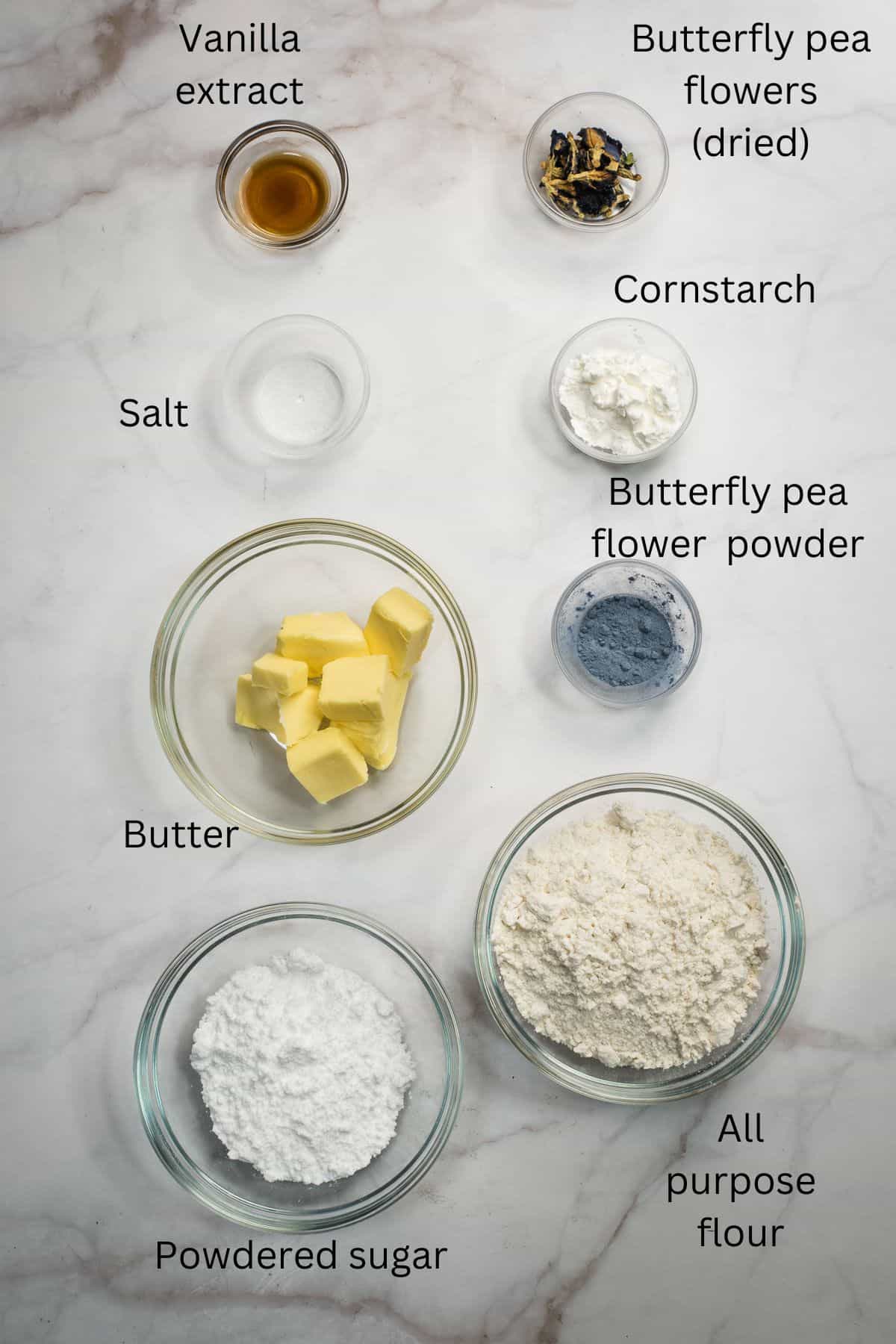
- All purpose flour - sift first before using.
- Cornstarch - used in small quantity in the recipe. Cornstarch helps give the cookies a light texture.
- Butter - I use salted butter. If using unsalted butter, add an extra pinch of salt in the recipe. Butter should be firm enough to hold its shape but soft enough to poke your finger into it.
- Powdered sugar - helps with the fine texture of the cookies. Sift first before using as powdered sugar tends to be lumpy.
- Salt - enhances the taste of the cookies. Use fine salt.
- Vanilla extract - adds a lovely aroma and flavor to the cookies.
- Butterfly pea flower powder (blue matcha powder) - this is butterfly pea flowers in powder form. Make sure to sift first as this powder also tends to be lumpy.
- Dried butterfly pea flowers - these are optional but add lovely specks to the cookies.
For the Lemon Glaze:
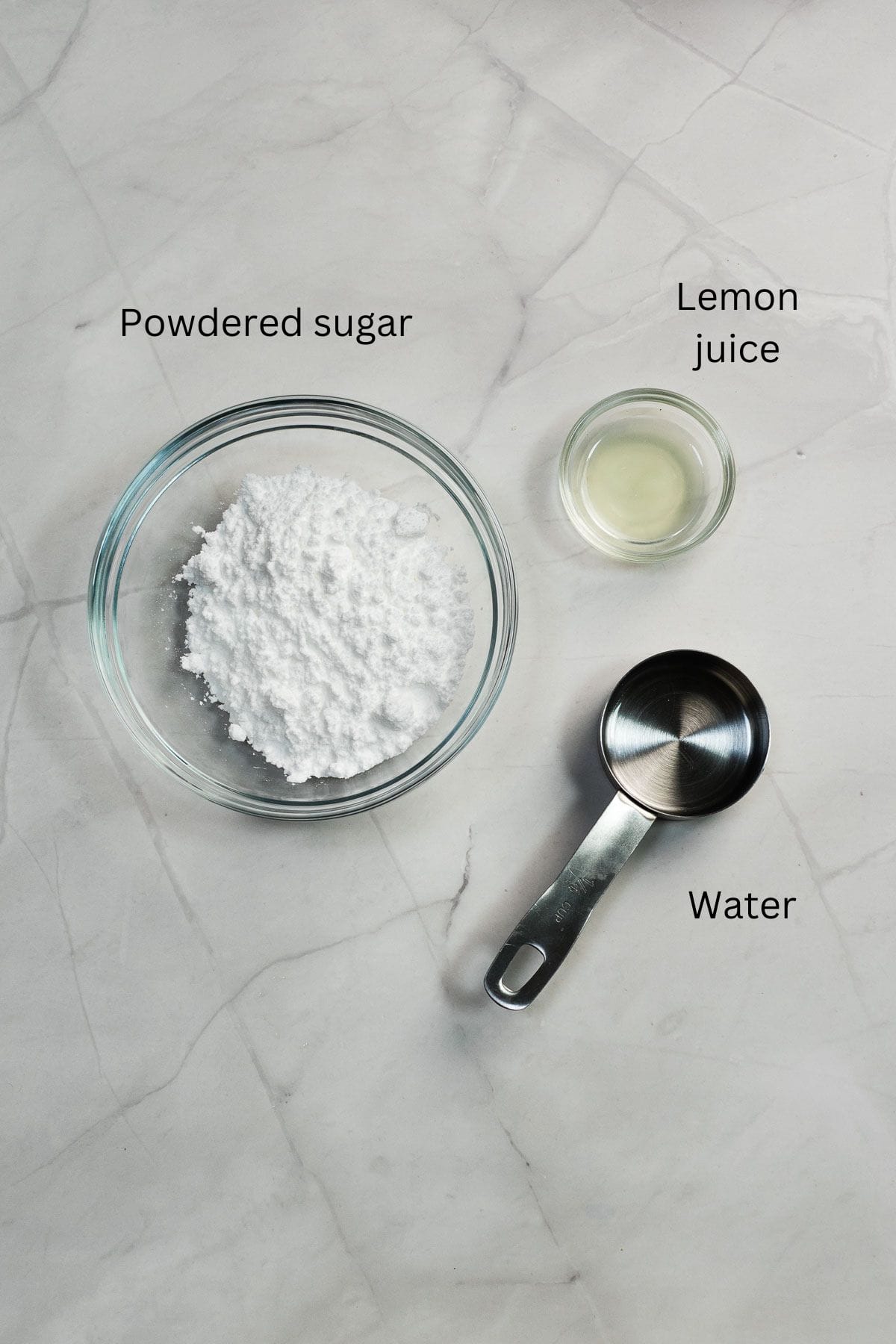
- Powdered sugar - sift first before using.
- Lemon juice - use fresh lemon juice and strain to remove any pulp or seeds before mixing into the sugar.
- Water - use filtered water.
Decoration
- Dried butterfly pea flowers
*Refer to the recipe card below for full list of ingredients and exact quantities. For best results, use a digital kitchen scale where applicable*
🧾Substitution and Variations
- Salted butter can be replaced with unsalted butter, but you will need to add an extra small pinch of salt to the recipe.
- If you do not have powdered sugar for the cookies, process white sugar (coarse or granulated) in a food processor until fine and sift before using.
- Vanilla extract can be replaced with rose extract for rose flavored butterfly pea cookies.
- If you prefer plain sugar glaze on the cookies instead of lemon flavored glaze, replace the lemon juice with water when making the glaze.
This recipe has not been tested with other substitutions or variations. If you do try, please let me know in the comments section below!
👩🏻🍳How to Make
Step 1: Mix the Cookie Dough

Cut the dried butterfly pea flowers to separate the blue petals from the green stems. Discard the green part and add the petals into a food processor. Since the quantity of the flowers is to little to be processed on their own, add half of the powdered sugar into the food processor to create volume (image 1).
Pulse the flowers and sugar until the flowers are broken into small pieces. Set aside. (You can skip these steps if you choose not to use the dried flowers in your cookies as the flowers are optional)(image 2).
Next, place the butter into a large bowl. Add the remaining powdered sugar. Cream until both the ingredients are well combined. Do not overbeat. Add the processed butterfly pea flowers and sugar mixture into the butter mixture and mix again until well combined (image 3).
In a separate bowl, combine the flour, cornstarch, salt and the butterfly pea powder and mix with a hand whisk.
Sift the dry ingredients and add them into the creamed butter and sugar mixture (image 4).
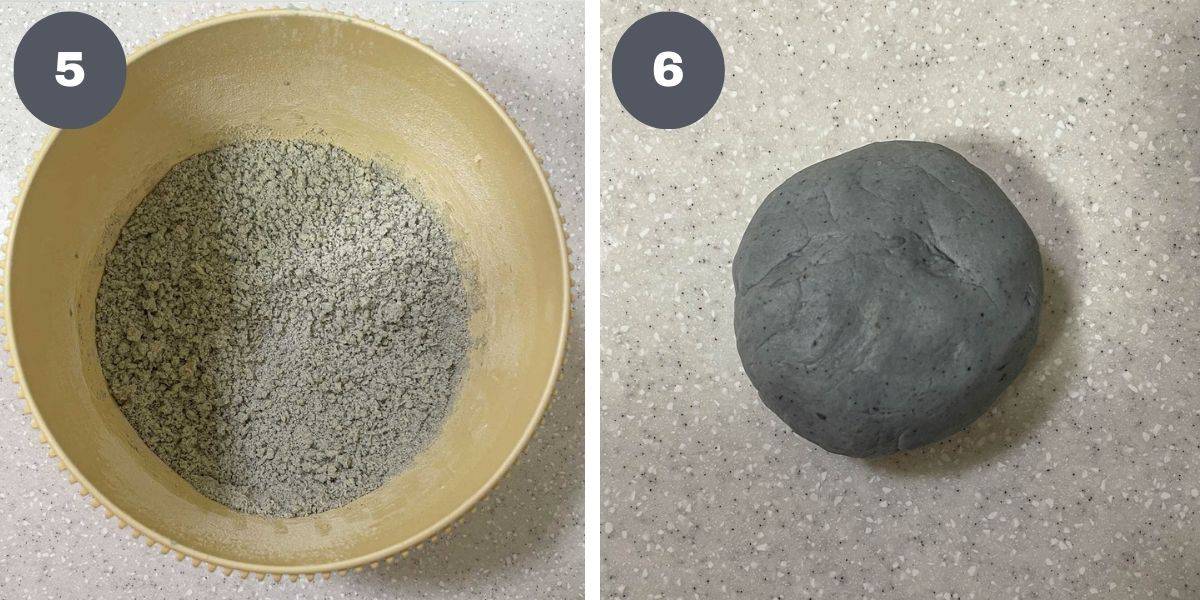
Mix the ingredients on low speed until the mixture turns crumbly like breadcrumbs (image 5).
Add the vanilla extract and transfer the cookie dough mixture onto a clean surface. Press it with your hands until it comes together into a dough ball (image 6). Do not overmix. If you find it hard to bring it together, let the dough rest for about 10 to 15 minutes and try again.
Step 2: Cut and Bake the Cookies
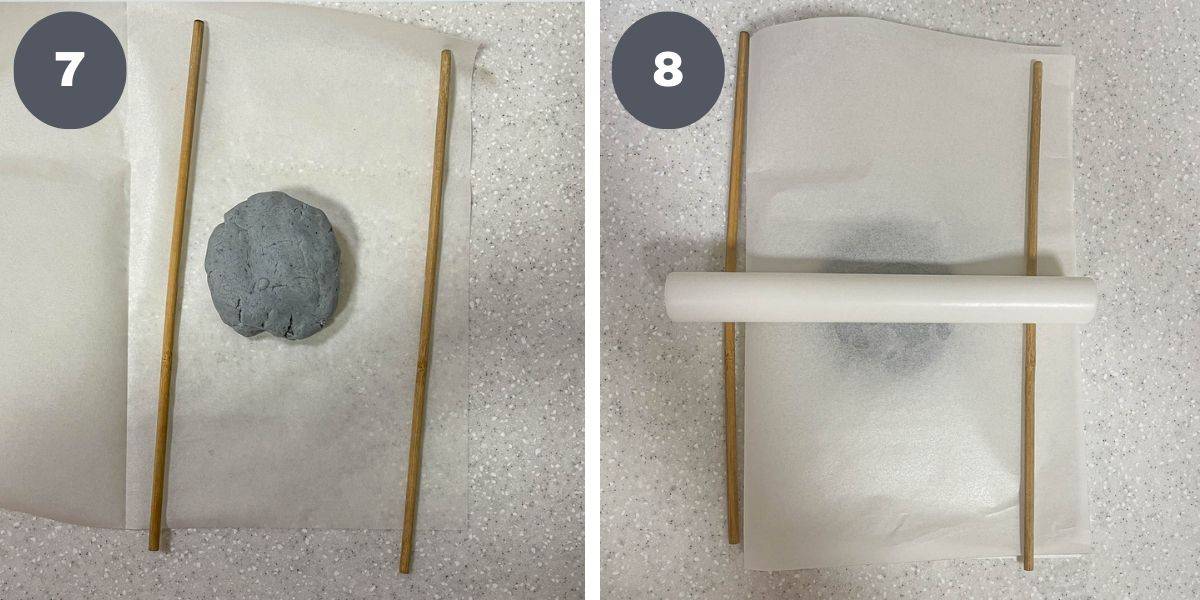
Divide the dough into 3 or 4 sections for easy rolling. Start with the first section. Form it into a ball and press it down lightly. Place the dough in between 2 sheets of parchment paper. Place 2 dowel rods on either side of the dough (image 7).
Roll the dough flat, making sure your rolling pin rolls on both the rods (image 8).
Note: This will ensure your cookie dough does not get flatter than the diameter of the rods and the cookies are of a consistent thickness.
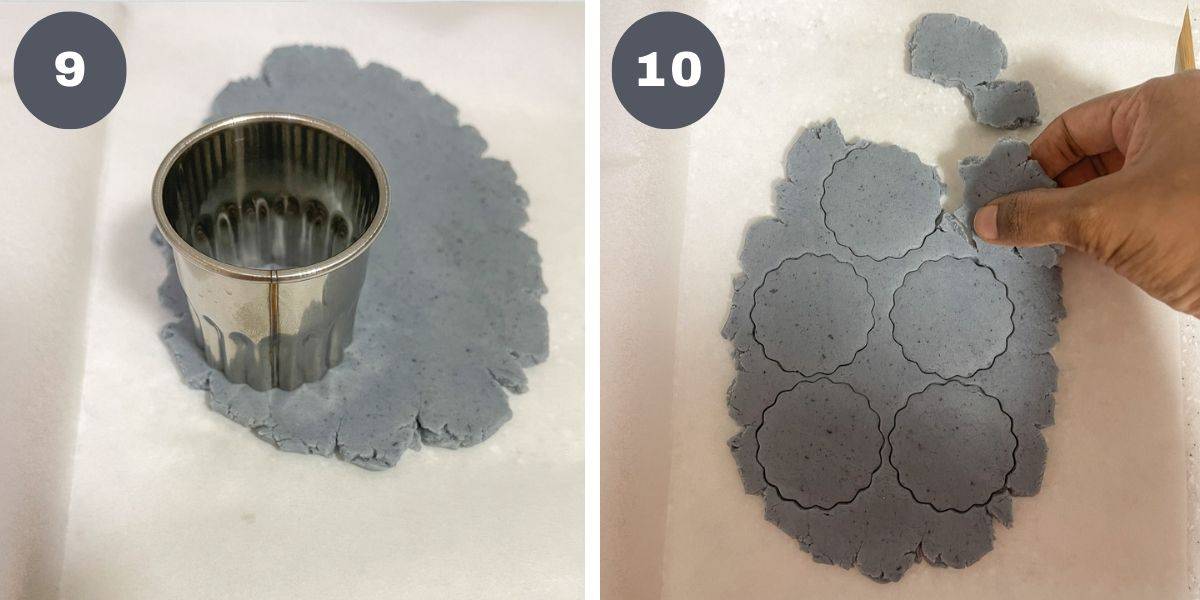
Set the rods aside and peel off the parchment paper on top. Use a round fluted cookie cutter (mine is 2 inches in diameter) to cut out as many cookies as you can from the rolled dough (image 9).
To lift the cut out cookie dough, remove the excess dough on the sides (image 10).
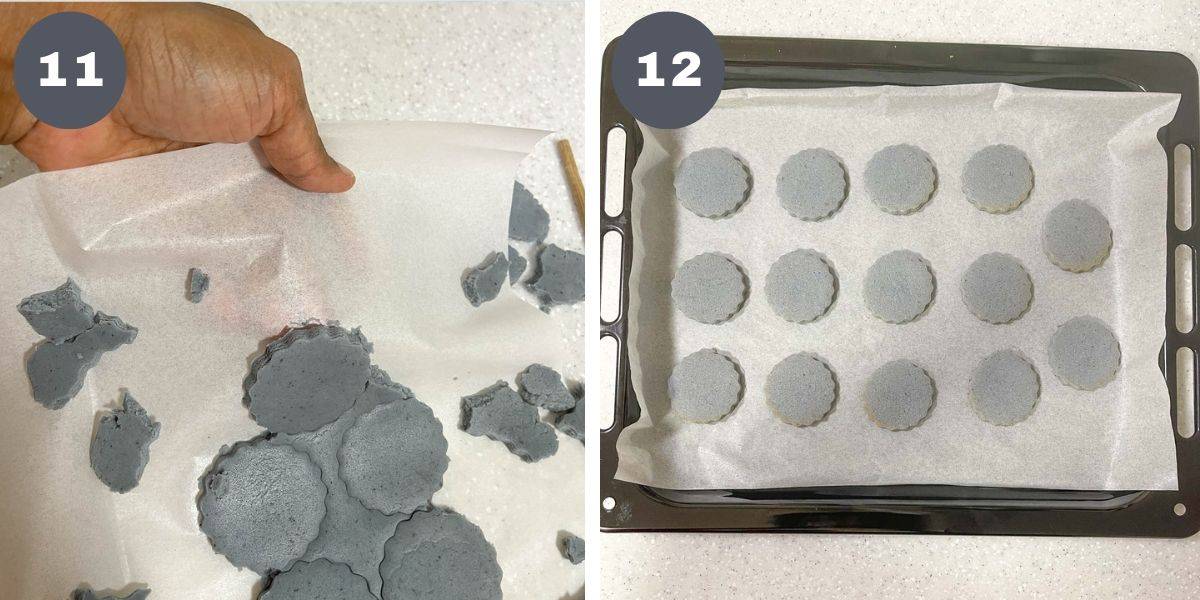
Lift the parchment paper and gently push the cookies up with your fingers (image 11).
Note: Another option is to slide a flat spatula underneath each cookie to lift them.
Remove any excess bits of dough around the cut outs and place the cookies on a lined baking sheet.
Note: The cookies do not puff or increase in size during baking, so you can place them fairly closely to one another on the baking tray. Leave about 2 cm distance between each cookie for easy handling.
Bake the cookies in a preheated oven at 170 degrees Celsius for about 8 to 10 minutes. If your cookies are browning too much on the sides, reduce the baking temperature for the next batch so that your cookies retain as much of the lovely blue color on the edges (image 12).
Remove the cookies from the oven and let them rest in the tray for about 3 to 4 minutes before transferring them onto a wire rack to cool completely. Keep the cookies in an airtight container as soon as they cool down to room temperature to retain their crisp and crumbly texture.
Step 3: Decorate the cookies
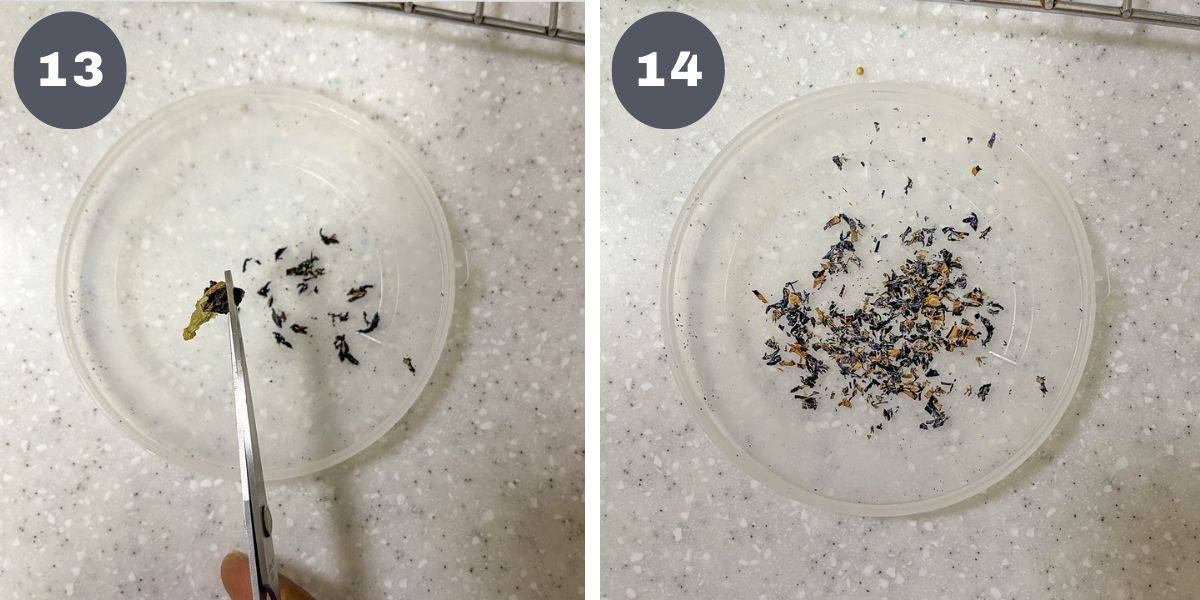
Start by preparing the flower flakes. Separate the blue petals from the green stems with scissors (image 13).
Discard the stems and chop the petals into tiny flakes. You can use a pair of scissors to cut the petals or use a knife to chop them. Set aside (image 14).
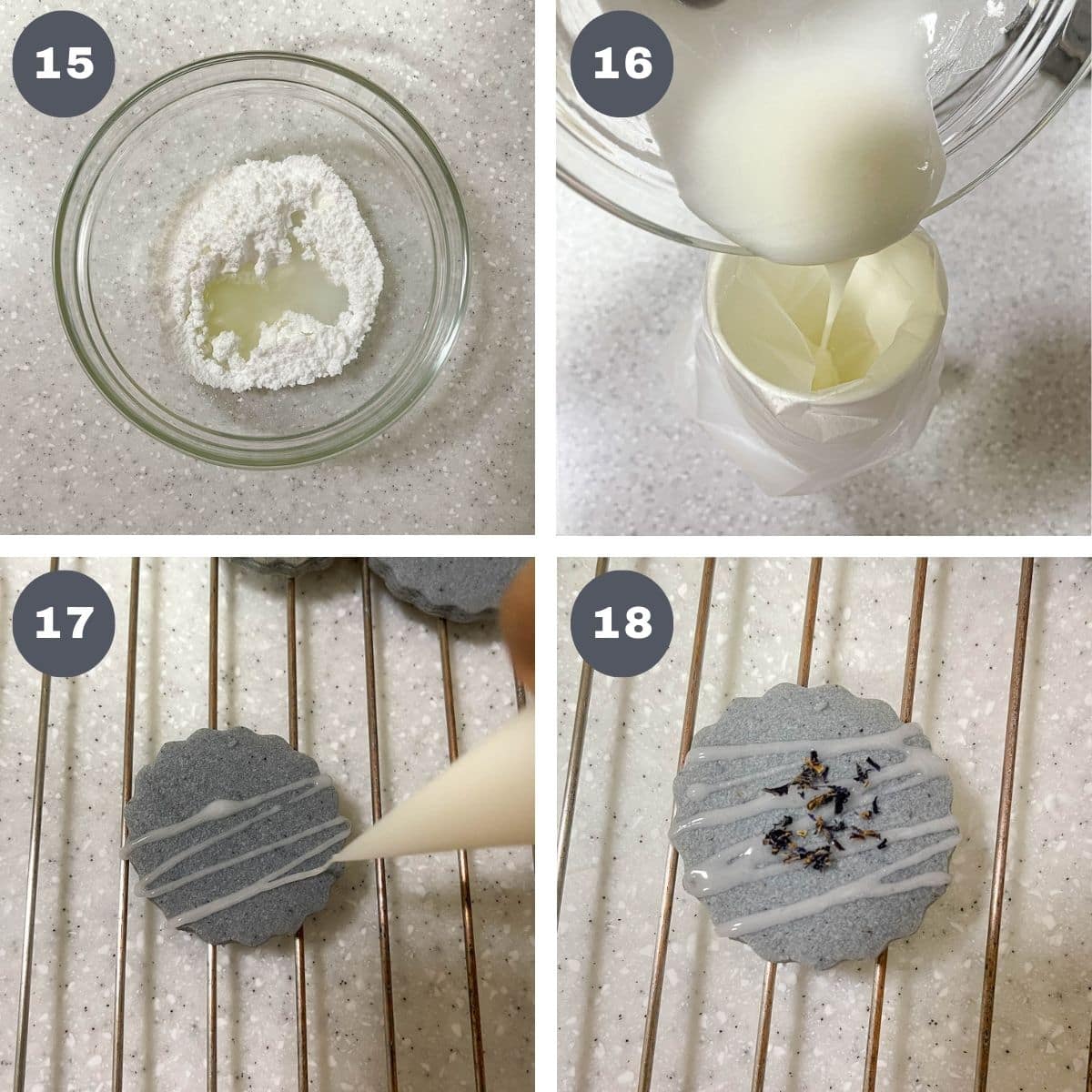
Next, make the lemon glaze. Sift the powdered sugar into a small mixing bowl. Strain the lemon juice in followed by the water (image 15).
Mix well until the sugar is all well incorporated. Test the consistency of the glaze by dripping it in lines on a plate (with a spoon). If it spreads out too much, add more sugar to thicken it.
Transfer the glaze into a piping bag (image 16).
Arrange the cookies on a wire rack, with at least 1 cm space between each cookie. Snip the tip of the piping bag (make sure it is a small hole). Drizzle the glaze onto each cookie (image 17).
Quickly sprinkle the top of each drizzled cookie with the dried butterfly pea flower flakes (image 18). It is best to do the drizzle in batches to avoid the glaze from hardening on the cookies as it will then not be able to hold the flower flakes in place.
Allow the glaze to set completely before storing the cookies back in an airtight container.
Note: When stacking the cookies in a cookie jar or a container, place paper doilies parchment paper cut outs in between the cookies to prevent the glaze icing for sticking to other cookies.
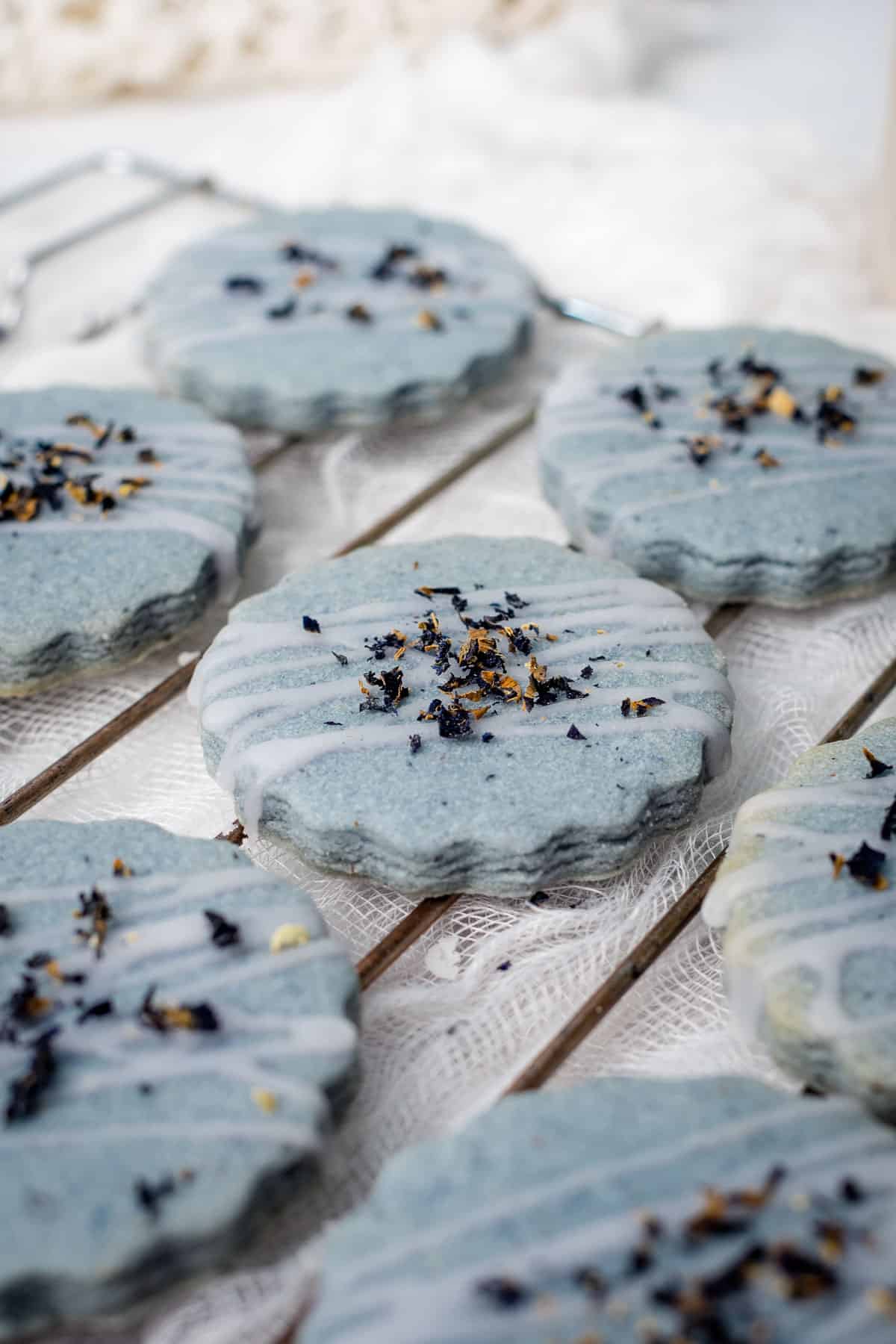
💡Expert Tips
- If the cookie dough is too sticky or too dry, let it rest at room temperature for about 15 to 30 minutes before rolling it.
- Placing dowel rods on either side of the dough when rolling will ensure your cookie dough is of consistent thickness.
- Rolling the dough in between 2 pieces of parchment paper will help avoid the dough from sticking to your rolling pin and your kitchen counter. It will also make it easier to lift the cut out cookie dough to the cookie trays for baking.
- Every oven behaves differently and it is always a good idea to test the baking temperature and baking time with a smaller batch of cookies so that you can adjust the temperature and time accordingly for the remaining batches.
- It is best to do the drizzle the lemon glaze onto the cookies in batches to avoid the glaze from hardening on the cookies before you sprinkle the flower flakes onto top. Once the glaze sets, it will not be able to hold the flower flakes in place.
💭FAQs
Butterfly pea flowers do not have any distinct taste other than a very slight floral note. They are mostly used for their natural blue color.
This cookies recipe is meant to make crisp and crumbly cookies with a texture similar to shortbread. It is not suitable to make chewy cookies.
The cookies are best served after they have cooled down completely.
They should be kept in an air tight container to retain their crisp and crumbly texture. The cookies can last well for a good 2 weeks.
❤️More Recipes You Will Love ❤️
Do you like this recipe? Please leave a 5-star ⭐⭐⭐⭐⭐rating in the recipe card below and consider a review further down this page. I would love to hear from you. Thank you!
📖Recipe
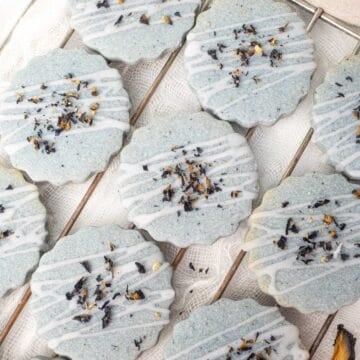
Butterfly Pea Cookies
For best results, use the metrics measurements. US customary measurements have not been tested and are only meant for guide.
Ingredients
Cookies
- 250 g all purpose flour
- 30 g cornstarch
- 150 g butter
- 100 g powdered sugar
- ⅛ teaspoon salt
- ½ teaspoon vanilla extract
- 20 dried butterfly pea flowers (optional)
- 6 g butterfly pea flower powder (blue matcha powder)
Lemon Glaze
- 70 g powdered sugar
- 1 teaspoon lemon juice (strained)
- 1 tablespoon warm water
Decoration
- 20 dried butterfly pea flowers
Instructions
Mix the cookie dough
- Preheat the oven to 170℃.
- Cut the dried butterfly pea flowers to separate the blue petals and the green stems. Discard the green part and add the petals into a food processor. Since the quantity of the flowers is less, add half of the powdered sugar into the food processor to create volume. Pulse the flowers and sugar until the flowers are broken into small pieces. Set aside. (Skip this step if you choose not to use the dried flowers in your cookies as the flowers are optional).
- Next, place the butter into a large mixing bowl. Add the remaining powdered sugar and beat until both the ingredients are well combined. Do not overbeat.
- Add the processed butterfly pea flowers and sugar mixture into the butter mixture and mix again until well combined.
- In a separate bowl, combine the flour, cornstarch, salt and the blue pea flowers powder and mix with a hand whisk.
- Sift the mixture and add it into the creamed butter and sugar.
- Mix the ingredients on low speed until the mixture turns crumbly like breadcrumbs.
- Add the vanilla extract and transfer the cookie dough mixture onto a clean surface.
- Press it with your hands until it comes together into a dough ball. Do not overmix (see Note 1)
Shape, cut and bake the cookies
- Divide the dough into 3 or 4 sections for easy rolling. Start with the first section. Form it into a ball and press it down lightly for easy rolling.
- Place the dough in between 2 sheets of parchment paper.
- Place 2 dowel rods on either side of the dough. The distance between both the rods should not be more than the length of your rolling pin.
- Roll the dough flat, making sure your rolling pin rolls on both the rods (see Notes 2 & 3)
- Set the rods aside and peel off the parchment paper on top.
- Use a round fluted cookie cutter (mine is 2 inches in diameter) to cut out as many cookies as you can from the rolled dough.
- To lift the cut out cookie dough, remove the excess dough on the sides. And then slide a flat spatula underneath each cut out to lift the cookies. The other option is to lift the parchment paper and gently push the cookies up with your fingers.
- Remove any excess bits of dough around the cut outs and place them on a lined baking tray. The cookies do not puff or increase in size during baking, so you can place them fairly closely to one another on the baking tray. Leave about 2 cm distance between each cookie for easy handling.
- Bake the cookies in a preheated oven at 170℃ for about 8 to 10 minutes. If your cookies are browning too much on the sides, reduce the baking temperature for the next batch so that your cookies retain their lovely blue color on the edges (see Note 4).
- Remove the cookies from the oven and let them rest in the tray for about 3 to 4 minutes before transferring them onto a wire rack to cool completely. Keep the cookies in an airtight container as soon as they cool down to room temperature to retain their crisp and crumbly texture.
Decorate the cookies
- Start by preparing the flower flakes. Separate the blue petals from the green stems with scissors.
- Discard the stems and chop the petals into tiny flakes. You can use a pair of scissors to cut the petals or use a knife to chop them. Set aside.
- To make the lemon glaze, sift the powdered sugar into a small bowl.
- Strain the lemon juice in followed by the water.
- Mix well until the sugar is all well incorporated. Test the consistency of the glaze by dripping it in lines on a plate (with a spoon). If it spreads out too much, add more sugar to thicken it.
- Transfer the glaze into a piping bag.
- Arrange the cookies on a wire rack, with at least 1 cm space between each cookie. Snip the tip of the piping bag (make sure it is a small hole). Drizzle the glaze onto each cookie (see Note 5).
- Quickly sprinkle the top of each drizzled cookie with the dried butterfly pea flower flakes. Allow the glaze to set completely before storing the cookies back in an airtight container (see Note 6).
Video
Notes
- If the cookie dough is too sticky or too dry, let it rest at room temperature for about 15 to 30 minutes before rolling it.
- Placing dowel rods on either side of the dough when rolling will ensure your cookie dough is of consistent thickness.
- Rolling the dough in between 2 pieces of parchment paper will help avoid the dough from sticking to your rolling pin and your kitchen counter. It will also make it easier to lift the cut out cookie dough to the cookie trays for baking.
- Every oven behaves differently and it is always a good idea to test the baking temperature and baking time with a smaller batch of cookies so that you can adjust the temperature and time accordingly for the remaining batches.
- It is best to do the drizzle the lemon glaze onto the cookies in small batches to avoid the glaze from hardening on the cookies before you sprinkle the flower flakes onto top. Once the glaze sets, it will not be able to hold the flower flakes in place.
- When stacking the cookies in a cookie jar or a container, place paper doilies parchment paper cut outs in between the cookies to prevent the glaze icing for sticking to other cookies.


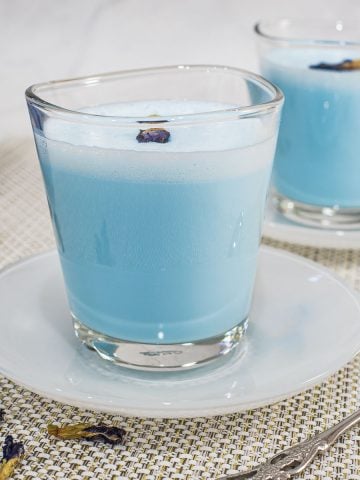
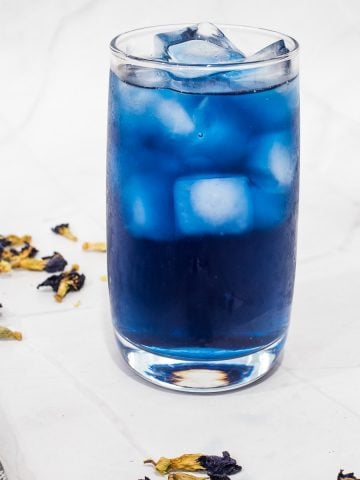
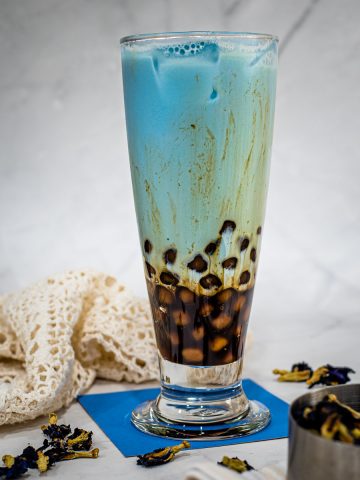
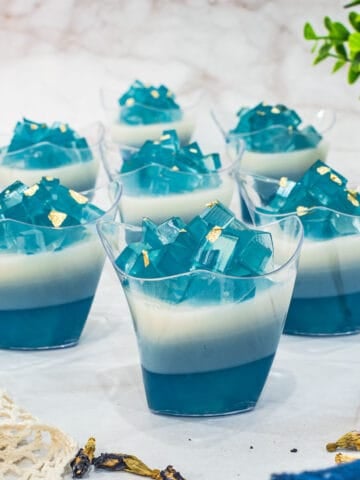
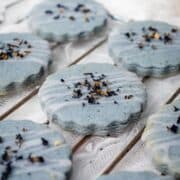
Julie Grodsky
Hello! I’m excited to make this recipe
For my yoga studio! In step 3 you refer to “cream” however it is not listed in the list of ingredients. Can you please explain? Do you believe cream is needed for the wet ingredients before mixing with the dry? Thank you!
Priya Maha
Hi Julie,
You are right. Cream is not an ingredient in this recipe. It was not meant as a noun, but a verb. I have changed the term to 'beat' to avoid confusion.